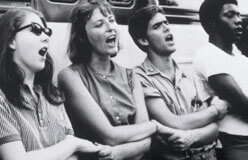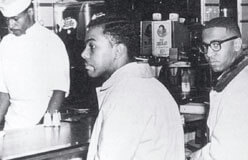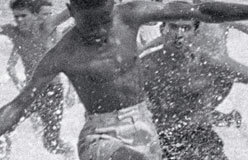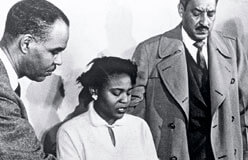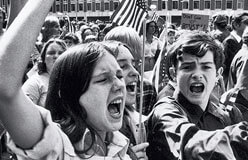There were more protests against segregation during World War II (1939–1945).
African Americans fought bravely in separate military units around the world. But they got only the worst jobs at home. More and more people joined the NAACP. Labor leader A. Philip Randolph threatened to lead a march on Washington. The march would protest discrimination in the military and in jobs. After the war, African Americans kept demanding their constitutional rights. The civil rights movement was born.
